Vitamin D as an adjunct to antibiotics for the treatment of acute childhood pneumonia
- PMID: 36633175
- PMCID: PMC9835443
- DOI: 10.1002/14651858.CD011597.pub3
Vitamin D as an adjunct to antibiotics for the treatment of acute childhood pneumonia
Abstract
Background: Children with acute pneumonia may be vitamin D deficient. Clinical trials have found that prophylactic vitamin D supplementation decreases children's risk of developing pneumonia. Data on the therapeutic effects of vitamin D in acute childhood pneumonia are limited. This is an update of a Cochrane Review first published in 2018.
Objectives: To evaluate the efficacy and safety of vitamin D supplementation as an adjunct to antibiotics for the treatment of acute childhood pneumonia.
Search methods: We searched CENTRAL, MEDLINE, Embase, and two trial registries on 28 December 2021. We applied no language restrictions.
Selection criteria: We included randomised controlled trials (RCTs) that compared vitamin D supplementation with placebo in children (aged one month to five years) hospitalised with acute community-acquired pneumonia, as defined by the World Health Organization (WHO) acute respiratory infection guidelines. For this update, we reappraised eligible trials according to research integrity criteria, excluding RCTs published from April 2018 that were not prospectively registered in a trials registry according to WHO or Clinical Trials Registry - India (CTRI) guidelines (it was not mandatory to register clinical trials in India before April 2018).
Data collection and analysis: Two review authors independently assessed trials for inclusion and extracted data. For dichotomous data, we extracted the number of participants experiencing the outcome and the total number of participants in each treatment group. For continuous data, we used the arithmetic mean and standard deviation (SD) for each treatment group together with number of participants in each group. We used standard methodological procedures expected by Cochrane.
Main results: In this update, we included three new trials involving 468 children, bringing the total number of trials to seven, with 1601 children (631 with pneumonia and 970 with severe or very severe pneumonia). We categorised three previously included studies and three new studies as 'awaiting classification' based on the research integrity screen. Five trials used a single bolus dose of vitamin D (300,000 IU in one trial and 100,000 IU in four trials) at the onset of illness or within 24 hours of hospital admission; one used a daily dose of oral vitamin D (1000 IU for children aged up to one year and 2000 IU for children aged over one year) for five days; and one used variable doses (on day 1, 20,000 IU in children younger than six months, 50,000 IU in children aged six to 12 months, and 100,000 IU in children aged 13 to 59 months; followed by 10,000 IU/day for four days or until discharge). Three trials performed microbiological diagnosis of pneumonia, radiological diagnosis of pneumonia, or both. Vitamin D probably has little or no effect on the time to resolution of acute illness (mean difference (MD) -1.28 hours, 95% confidence interval (CI) -5.47 to 2.91; 5 trials, 1188 children; moderate-certainty evidence). We do not know if vitamin D has an effect on the duration of hospitalisation (MD 4.96 hours, 95% CI -8.28 to 18.21; 5 trials, 1023 children; very low-certainty evidence). We do not know if vitamin D has an effect on mortality rate (risk ratio (RR) 0.69, 95% CI 0.44 to 1.07; 3 trials, 584 children; low-certainty evidence). The trials reported no major adverse events. According to GRADE criteria, the evidence was of very low-to-moderate certainty for all outcomes, owing to serious trial limitations, inconsistency, indirectness, and imprecision. Three trials received funding: one from the New Zealand Aid Corporation, one from an institutional grant, and one from multigovernment organisations (Bangladesh, Sweden, and UK). The remaining four trials were unfunded.
Authors' conclusions: Based on the available evidence, we are uncertain whether vitamin D supplementation has important effects on outcomes of acute pneumonia when used as an adjunct to antibiotics. The trials reported no major adverse events. Uncertainty in the evidence is due to imprecision, risk of bias, inconsistency, and indirectness.
Copyright © 2023 The Cochrane Collaboration. Published by John Wiley & Sons, Ltd.
Conflict of interest statement
RRD: has declared that they have no conflict of interest. MS: has declared that they have no conflict of interest. SSN: has declared that they have no conflict of interest.
Figures
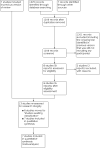
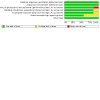

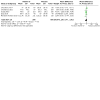
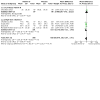

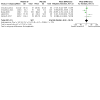
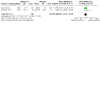
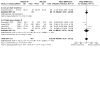

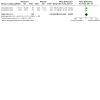
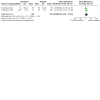
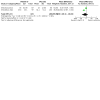
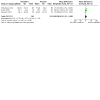
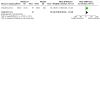

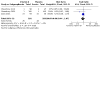
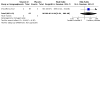
Update of
-
Vitamin D as an adjunct to antibiotics for the treatment of acute childhood pneumonia.Cochrane Database Syst Rev. 2018 Jul 19;7(7):CD011597. doi: 10.1002/14651858.CD011597.pub2. Cochrane Database Syst Rev. 2018. Update in: Cochrane Database Syst Rev. 2023 Jan 12;1:CD011597. doi: 10.1002/14651858.CD011597.pub3. PMID: 30024634 Free PMC article. Updated.
Similar articles
-
Vitamin D as an adjunct to antibiotics for the treatment of acute childhood pneumonia.Cochrane Database Syst Rev. 2018 Jul 19;7(7):CD011597. doi: 10.1002/14651858.CD011597.pub2. Cochrane Database Syst Rev. 2018. Update in: Cochrane Database Syst Rev. 2023 Jan 12;1:CD011597. doi: 10.1002/14651858.CD011597.pub3. PMID: 30024634 Free PMC article. Updated.
-
Drugs for preventing postoperative nausea and vomiting in adults after general anaesthesia: a network meta-analysis.Cochrane Database Syst Rev. 2020 Oct 19;10(10):CD012859. doi: 10.1002/14651858.CD012859.pub2. Cochrane Database Syst Rev. 2020. PMID: 33075160 Free PMC article.
-
Vitamin D for the treatment of inflammatory bowel disease.Cochrane Database Syst Rev. 2023 Oct 2;10(10):CD011806. doi: 10.1002/14651858.CD011806.pub2. Cochrane Database Syst Rev. 2023. PMID: 37781953 Free PMC article.
-
Ivermectin for preventing and treating COVID-19.Cochrane Database Syst Rev. 2022 Jun 21;6(6):CD015017. doi: 10.1002/14651858.CD015017.pub3. Cochrane Database Syst Rev. 2022. PMID: 35726131 Free PMC article.
-
Integrated management of childhood illness (IMCI) strategy for children under five.Cochrane Database Syst Rev. 2016 Jun 22;2016(6):CD010123. doi: 10.1002/14651858.CD010123.pub2. Cochrane Database Syst Rev. 2016. PMID: 27378094 Free PMC article.
Cited by
-
Changes in DNA Methylation and mRNA Expression in Lung Tissue after Long-Term Supplementation with an Increased Dose of Cholecalciferol.Int J Mol Sci. 2023 Dec 29;25(1):464. doi: 10.3390/ijms25010464. Int J Mol Sci. 2023. PMID: 38203636 Free PMC article.
-
Vitamin D Improves Klebsiella-Induced Severe Pneumonia in Rats by Regulating Intestinal Microbiota.Infect Drug Resist. 2024 Feb 8;17:475-484. doi: 10.2147/IDR.S442330. eCollection 2024. Infect Drug Resist. 2024. PMID: 38348232 Free PMC article.
-
Vitamin D and Respiratory Diseases : Based on 11th Dr. I. C. Verma Excellence in Research Award for Young Pediatricians Delivered as Oration on 15th Oct. 2023.Indian J Pediatr. 2024 Jan;91(1):67-72. doi: 10.1007/s12098-023-04904-2. Epub 2023 Nov 10. Indian J Pediatr. 2024. PMID: 37945979 Review.
-
Prevalence of vitamin D deficiency and associated risk of all-cause and cause-specific mortality among middle-aged and older adults in the United States.Front Nutr. 2023 May 18;10:1163737. doi: 10.3389/fnut.2023.1163737. eCollection 2023. Front Nutr. 2023. PMID: 37275650 Free PMC article.
-
Vitamin D promotes autophagy to inhibit LPS-induced lung injury via targeting cathepsin D.Naunyn Schmiedebergs Arch Pharmacol. 2025 May;398(5):5531-5541. doi: 10.1007/s00210-024-03619-1. Epub 2024 Nov 21. Naunyn Schmiedebergs Arch Pharmacol. 2025. PMID: 39570382
References
References to studies included in this review
Choudhary 2012 {published data only}
-
- Choudhary N, Gupta P. Vitamin D supplementation for severe pneumonia – a randomized controlled trial. Indian Pediatrics 2012;49(6):449-54. - PubMed
Chowdhury 2021 {published data only}
-
- Chowdhury F, Shahid AS, Tabassum M, Parvin I, Ghosh PK, Hossain MI, et al. Vitamin D supplementation among Bangladeshi children under-five years of age hospitalised for severe pneumonia: a randomised placebo controlled trial. PLOS One 2021;16(2):e0246460. [DOI: 10.1371/journal.pone.0246460] - DOI - PMC - PubMed
Gupta 2016 {published data only}
-
- Gupta P, Dewan P, Shah D, Sharma N, Bedi N, Kaur IR, et al. Vitamin D supplementation for treatment and prevention of pneumonia in under-five children: a randomized double-blind placebo controlled trial. Indian Pediatrics 2016;53(11):967-76. - PubMed
Jingi 2018 {published data only}
-
- Jingi JK, Patil SS, Desai A. Effect of vitamin D supplementation in under-5 children with pneumonia: a randomized controlled trial. Indian Journal of Child Health 2018;5(4):235-9.
Labib 2021 {published data only}
Manaseki‐Holland 2010 {published data only}
-
- Manaseki-Holland S, Qader G, Isaq Masher M, Bruce J, Zulf Mughal M, Chandramohan D, et al. Effects of vitamin D supplementation to children diagnosed with pneumonia in Kabul: a randomised controlled trial. Tropical Medicine and International Health 2010;15(10):1148-55. - PubMed
Somnath 2017 {published data only}
-
- Somnath SH, Biswal N, Chandrasekaran V, Jagdisan B, Bobby Z. Therapeutic effect of vitamin D in acute lower respiratory infection: a randomized controlled trial. Clinical Nutrition ESPEN 2017;20:24-8. - PubMed
References to studies excluded from this review
Jadhav 2021 {published data only}
-
- Jadhav S, Khanwelkar C, Jadhav A, Seshla S. Vitamin D supplementation in the prevention of recurrent acute respiratory tract infections in children aged < 5 years. Journal of Medical Sciences 2021;3:129-33.
Singh 2019 {published data only}
-
- Singh N, Kamble D, Mahantshetti NS. Effect of vitamin D supplementation in the prevention of recurrent pneumonia in under-five children. Indian Journal of Pediatrics 2019;86(12):1105-11. - PubMed
Zhou 2016 {published data only}
-
- Zhou W, Zuo X, Li J, Yu Z. Effects of nutrition intervention on the nutritional status and outcomes of pediatric patients with pneumonia. Minerva Pediatrica 2016;68(1):5-10. - PubMed
References to studies awaiting assessment
Bisht 2017 {published data only}
-
- Bisht A, Pannu MS, Singh N, Singh K, Kumar A, Neki NS. Role of vitamin D supplementation in severe pneumonia in children of age group 2 months to 5 years: a randomized controlled trial. International Journal of Current Research in Medical Sciences 2017;3(8):105-11.
Dhungel 2015 {published data only}
-
- Dhungel A, Alam MS. Efficacy of vitamin D in children with pneumonia: a randomized control trial study. Janaki Medical College Journal of Medical Sciences 2015;3(1):5-13.
Gaber 2018 {published data only}
-
- Gaber MM, Ali FA, Zaghlol KS. The effect of vitamin-D supplementation in severe pneumonia among infants. Medical Journal of Cairo University 2018;86(June):1303-9.
Rahmati 2016 {published data only}
-
- Rahmati MB, Rezapour M, Shahvari SZ. The effects of vitamin D supplementation in respiratory index of severity in children (RISC) of hospitalized patients with community-acquired pneumonia: a double-blind randomized clinical trial. Acta Health Medica 2016;1(3):60-4.
Rajshekhar 2016 {published data only}
-
- Rajshekhar CS, Vanaki R, Badakali AV, Pol RR, Yelamali BC. Efficacy of vitamin D supplementation in the treatment of severe pneumonia in children aged less than five years. International Journal of Contemporary Pediatrics 2016;3(1):96-9.
Shamaoon 2018 {published data only}
-
- Shamaoon M, Maryam, Ahsan M, Ahmad R. Vitamin D and pneumonia; role of vitamin D supplementation in children with pneumonia, a randomised control trial. Professional Medical Journal 2018;25(4):532-7. [DOI: 10.29309/TPMJ/18.4508] - DOI
References to ongoing studies
NCT02054182 {published data only}
-
- NCT02054182. Effect of vitamin D supplementation in young South African children hospitalized with acute lower respiratory infection. clinicaltrials.gov/ct2/show/NCT02054182 (first received 18 January 2014).
Additional references
Akeredolu 2021
Alfirevic 2021
-
- Alfirevic Z, Kellie FJ, Stewart F, Jones L, Hampson L, on behalf of Pregnancy and Childbirth Editorial Board . Identifying and handling potentially untrustworthy trials in Pregnancy and Childbirth Cochrane Reviews. Available from: pregnancy.cochrane.org/news/identifying-and-handling-potentially-untrust... (accessed 4 October 2022).
Alvarez‐Rodriguez 2012
-
- Alvarez-Rodriguez L, Lopez-Hoyos M, Garcia-Unzueta M, Amado JA, Cacho PM, Martinez-Taboada VM. Age and low levels of circulating vitamin D are associated with impaired innate immune function. Journal of Leukocyte Biology 2012;91(5):829-38. - PubMed
Atkins 2004
Bang 2011
-
- Bang UC, Novovic S, Andersen AM, Fenger M, Hansen MB, Jensen JE. Variations in serum 25-hydroxy vitamin D during acute pancreatitis: an exploratory longitudinal study. Endocrine Research 2011;36(4):135-41. - PubMed
Binks 2014
Chang 2014
Chee 2022
Chowdhury 2022 [pers comm]
-
- Chowdhury F. Providing data reported in median (IQR) in our trial as mean (SD) [personal communication]. Email to: RR Das 27 February 2022.
Cochrane policy – managing problematic studies
-
- Cochrane Database of Systematic Reviews: editorial policies. Cochrane policy on managing potentially problematic studies. www.cochranelibrary.com/cdsr/editorial-policies#problematic-studies (accessed 3 October 2022).
Das 2012
-
- Das RR, Singh M, Shafiq N. Short-term therapeutic role of zinc in children < 5 years of age hospitalised for severe acute lower respiratory tract infection. Paediatric Respiratory Reviews 2012;13(3):184-91. - PubMed
Das 2017 [pers comm]
-
- Das RR. Information needed regarding antibiotic therapy and hospitalisation [personal communication]. Email to: M Rezapour 8 November 2017.
Das 2021
-
- Das RR, Satapathy AK, Mukherjee A, Goyal JP, Bhat JI, Ratageri VH, et al, Members of The ATU (Acute Respiratory Infection Treatment Unit) Group. Role of clinical criteria and oxygen saturation monitoring in diagnosis of childhood pneumonia in children aged 2 to 59 months. Indian Pediatrics 2021;58(11):1024-9. [PMID: ] - PubMed
Gombart 2005
-
- Gombart AF, Borregaard N, Koeffler HP. Human cathelicidin antimicrobial peptide (CAMP) gene is a direct target of the vitamin D receptor and is strongly up-regulated in myeloid cells by 1,25-dihydroxy vitamin D₃. FASEB Journal 2005;19(9):1067-77. - PubMed
Goyal 2021
-
- Goyal JP, Kumar P, Mukherjee A, Das RR, Bhat JI, Ratageri V, et al, Acute Respiratory Infection Treatment Unit Study Group. Risk factors for the development of pneumonia and severe pneumonia in children. Indian Pediatrics 2021;58(11):1036-9. [PMID: ] - PubMed
GRADEpro GDT [Computer program]
-
- GRADEpro GDT. Version (accessed prior to 19 December 2022). Hamilton (ON): McMaster University (developed by Evidence Prime), 2015. Available from gradepro.org.
Grant 2009
-
- Grant CC, Wall CR, Crengle S, Scragg R. Vitamin D deficiency in early childhood: prevalent in the sunny South Pacific. Public Health Nutrition 2009;12(10):1893-901. - PubMed
Grey 2020
-
- Grey A, Bolland MJ, Avenell A, Klein AA, Gunsalus CK. Check for publication integrity before misconduct. Nature 2020;577(7789):167-9. - PubMed
Gupta 2016 [pers comm]
-
- Gupta P. Providing data reported in median (IQR) in our trial as mean (SD) [personal communication]. Email to: RR Das 24 April 2016.
Haider 2011a
Haider 2011b
Hansdottir 2008
Heaney 2012
-
- Heaney RP. Vitamin D – baseline status and effective dose. New England Journal of Medicine 2012;367(1):77-8. - PubMed
Hemilä 2013
Hewison 2011
-
- Hewison M. Antibacterial effects of vitamin D. Nature Reviews Endocrinology 2011;7(6):337-45. - PubMed
Higgins 2011
-
- Higgins JP, Altman DG. Chapter 8: Assessing risk of bias in included studies. In: Higgins JP, Green S, editors(s). Cochrane Handbook for Systematic Reviews of Interventions Version 5.1.0 (updated March 2011). The Cochrane Collaboration, 2011. Available from training.cochrane.org/handbook/archive/v5.1/.
Hollis 2011
-
- Hollis BW. Short-term and long-term consequences and concerns regarding valid assessment of vitamin D deficiency: comparison of recent food supplementation and clinical guidance reports. Current Opinion in Clinical Nutrition and Metabolic Care 2011;14(6):598-604. - PubMed
Hozo 2005
IAP 2006
-
- Agarwal R, Singh V, Yewale V. RTI Facts. IAP consensus guidelines on rational management of respiratory tract infections in children. Mumbai: Indian Academyof Pediatrics (IAP) 2006.
Implementation guidance – problematic studies
-
- Cochrane Editorial and Publishing Policy Resource. Policy for managing potentially problematic studies: implementation guidance. documentation.cochrane.org/display/EPPR/Policy+for+managing+potentially+... (accessed 4 October 2022).
Janssen 2007
-
- Janssen R, Bont L, Siezen CL, Hodemaekers HM, Ermers MJ, Doornbos G, et al. Genetic susceptibility to respiratory syncytial virus bronchiolitis is predominantly associated with innate immune genes. Journal of Infectious Diseases 2007;196(6):826-34. - PubMed
Joshi 2014
-
- Joshi K, Bhatia V. Vitamin D deficiency in a tropical country – treatment and prevention in children. Indian Journal of Pediatrics 2014;81(1):84-9. - PubMed
Kelishadi 2014
-
- Kelishadi R, Ardalan G, Motlagh ME, Shariatinejad K, Heshmat R, Poursafa P, et al. National report on the association of serum vitamin D with cardiometabolic risk factors in the pediatric population of the Middle East and North Africa (MENA): the CASPIAN-III Study. Nutrition 2014;30(1):33-8. - PubMed
Kimball 2011
Labib 2022 [pers comm]
-
- Labib JR. Providing data reported in median (IQR) in our trial as mean (SD) [personal communication]. Email to: RR Das 27 February 2022.
Lassi 2014
-
- Lassi ZS, Kumar R, Das JK, Salam RA, Bhutta ZA. Antibiotic therapy versus no antibiotic therapy for children aged two to 59 months with WHO-defined non-severe pneumonia and wheeze. Cochrane Database of Systematic Reviews 2014, Issue 5. Art. No: CD009576. [DOI: 10.1002/14651858.CD009576.pub2] - DOI - PubMed
Lefebvre 2011
-
- Lefebvre C, Manheimer E, Glanville J. Chapter 6: Searching for studies. In: Higgins JP, Green S, editors(s). Cochrane Handbook for Systematic Reviews of Interventions Version 5.1.0 (updated March 2011). The Cochrane Collaboration, 2011. Available from training.cochrane.org/handbook/archive/v5.1/.
Liu 2006
-
- Liu PT, Stenger S, Li H, Wenzel L, Tan BH, Krutzik SR, et al. Toll-like receptor triggering of a vitamin D-mediated human antimicrobial response. Science 2006;311(5768):1770-3. - PubMed
Lodha 2013
Luo 2018
-
- Luo D, Wan X, Liu J, Tong T. Optimally estimating the sample mean from the sample size, median, mid-range, and/or mid-quartile range. Statistical Methods in Medical Research 2018;27(6):1785-805. - PubMed
Manaseki‐Holland 2012
Manaseki‐Holland 2017 [pers comm]
-
- Manaseki-Holland. Mortality data reported in our trial [personal communication]. Email to: RR Das 4 May 2017.
Mansbach 2009
Martineau 2012
-
- Martineau AR. Bolus-dose vitamin D and prevention of childhood pneumonia. Lancet 2012;379(9824):1373-5. - PubMed
Mathew 2010
Mathew 2015
McAllister 2006
-
- McAllister JC, Lane AT, Buckingham BA. Vitamin D deficiency in the San Francisco bay area. Journal of Pediatric Endocrinology and Metabolism 2006;19(3):205-8. - PubMed
Munns 2016
Mylott 2004
-
- Mylott BM, Kump T, Bolton ML, Greenbaum LA. Rickets in the Dairy State. Wisconsin Medical Journal 2004;103(5):84-7. - PubMed
Najada 2004
-
- Najada AS, Habashneh MS, Khader M. The frequency of nutritional rickets among hospitalized infants and its relation to respiratory diseases. Journal of Tropical Pediatrics 2004;50(6):364-8. - PubMed
Nielsen 2010
-
- Nielsen NO, Skifte T, Andersson M, Wohlfahrt J, Søborg B, Koch A, et al. Both high and low serum vitamin D concentrations are associated with tuberculosis: a case-control study in Greenland. British Journal of Nutrition 2010;104(10):1487-91. - PubMed
NIH Vitamin D Fact Sheet
-
- National Institutes of Health (NIH) Office of dietary supplements. Vitamin D fact sheet for health professionals. ods.od.nih.gov/factsheets/VitaminD-HealthProfessional/ (accessed prior to 8 June 2017).
Oktaria 2021
Olliver 2013
-
- Olliver M, Spelmink L, Hiew J, Meyer-Hoffert U, Henriques-Normark B, Bergman P. Immunomodulatory effects of vitamin D on innate and adaptive immune responses to Streptococcus pneumoniae. Journal of Infectious Diseases 2013;208(9):1474-81. - PubMed
Perin 2022
-
- Perin J, Mulick A, Yeung D, Villavicencio F, Lopez G, Strong KL, et al. Global, regional, and national causes of under-5 mortality in 2000–19: an updated systematic analysis with implications for the Sustainable Development Goals. Lancet Child and Adolescent Health 2022;6(2):106-15. [DOI: 10.1016/S2352-4642(21)00311-4] - DOI - PMC - PubMed
Pfeffer 2012
-
- Pfeffer PE, Hawrylowicz CM. Vitamin D and lung disease. Thorax 2012;67(11):1018-20. - PubMed
Popp 2022
Rajshekhar 2017 [pers comm]
-
- Rajshekhar C. Blinding and allocation concealment used in our trial [personal communication]. Email to: RR Das 3 June 2017.
Raloff 2006
-
- Raloff J. The antibiotic vitamin: deficiency in vitamin D may predispose people to infection. Science News 2006;170(20):312-7.
Review Manager 2014 [Computer program]
-
- Review Manager 5 (RevMan 5). Version 5.3. Copenhagen: Nordic Cochrane Centre, The Cochrane Collaboration, 2014.
Robinson 2006
Rudan 2008
Schünemann 2011
-
- Schünemann HJ, Oxman AD, Vist GE, Higgins JP, Deeks JJ, Glasziou P, et al. Chapter 12: Interpreting results and drawing conclusions. In: Higgins JP, Green S, editors(s). Cochrane Handbook for Systematic Reviews of Interventions Version 5.1.0 (updated March 2011). The Cochrane Collaboration, 2011. Available from training.cochrane.org/handbook/archive/v5.1/.
Scott 2012
Shetty 2021
-
- Shetty NS, Salvi RA, Thatte UM, Gogtay NJ. Has mandatory prospective registration of all studies brought about a change? A 1-year audit of studies registered in the Clinical Trials Registry of India [CTRI] before and after April 1, 2018. Perspectives in Clinical Research 2021;12(2):72-5. - PMC - PubMed
Somnath 2022 [pers comm]
-
- Somnath SH. Providing data reported in median (IQR) in our trial as mean (SD) [personal communication]. Email to: RR Das 4 August 2022.
Thacher 2012
-
- Thacher TD, Fischer PR, Isichei CO, Zoakah AI, Pettifor JM. Prevention of nutritional rickets in Nigerian children with dietary calcium supplementation. Bone 2012;50(5):1074-80. - PubMed
Torun 2013
-
- Torun E, Genç H, Gönüllü E, Akovalı B, Ozgen IT. The clinical and biochemical presentation of vitamin D deficiency and insufficiency in children and adolescents. Journal of Pediatric Endocrinology and Metabolism 2013;26(5-6):469-75. - PubMed
Wagner 2008
-
- Wagner CL, Greer FR. Prevention of rickets and vitamin D deficiency in infants, children, and adolescents. Pediatrics 2008;122(5):1142-52. - PubMed
Wahed 2008
-
- Wahed MA, Islam MA, Khondakar P, Haque MA. Effect of micronutrients on morbidity and duration of hospital stay in childhood pneumonia. Mymensingh Medical Journal 2008;17(Suppl 2):S77-83. [PMID: ] - PubMed
Walker 2009
Wan 2014
Ward 2005
Ward 2007
Weibel 2022
-
- Weibel S, Popp M, Reis S, Skoetz N, Garner P, Sydenham E. Identifying and managing problematic trials: a Research Integrity Assessment (RIA) tool for randomized controlled trials in evidence synthesis. Research Synthesis Methods 2022 August 29 [Epub ahead of print]. [DOI: 10.1002/jrsm.1599] - DOI - PMC - PubMed
Weisberg 2004
-
- Weisberg P, Scanlon KS, Li R, Cogswell ME. Nutritional rickets among children in the United States: review of cases reported between 1986 and 2003. American Journal of Clinical Nutrition 2004;8(Suppl 6):1697-705. - PubMed
White 2008
WHO 2005
-
- World Health Organization. Handbook: IMCI integrated management of childhood illness, 2005. Available at: apps.who.int/iris/handle/10665/42939 (accessed 5 October 2022).
WHO 2014
-
- World Health Organization . Revised WHO Classification and Treatment of Childhood Pneumonia at Health Facilities. Evidence summaries, 2014. Available at: apps.who.int/iris/bitstream/handle/10665/137319/9789241507813_eng.pdf (accessed 5 October 2022).
WHO 2018
-
- World Health Organization. International standards for clinical trial registries – Version 3.0. Available at: www.who.int/publications/i/item/international-standards-for-clinical-tri... (accessed 4 October 2022).
Wondale 2005
-
- Wondale Y, Shiferaw F, Lulseged S. A systematic review of nutritional rickets in Ethiopia: status and prospects. Ethiopian Medical Journal 2005;43(3):203-10. - PubMed
Zhang 2013
-
- Zhang W, Stoecklin E, Eggersdorfer M. A glimpse of vitamin D status in Mainland China. Nutrition 2013;29(7-8):953-7. - PubMed
References to other published versions of this review
Das 2013
Das 2015
Publication types
MeSH terms
Substances
LinkOut - more resources
Full Text Sources
Medical
Miscellaneous

